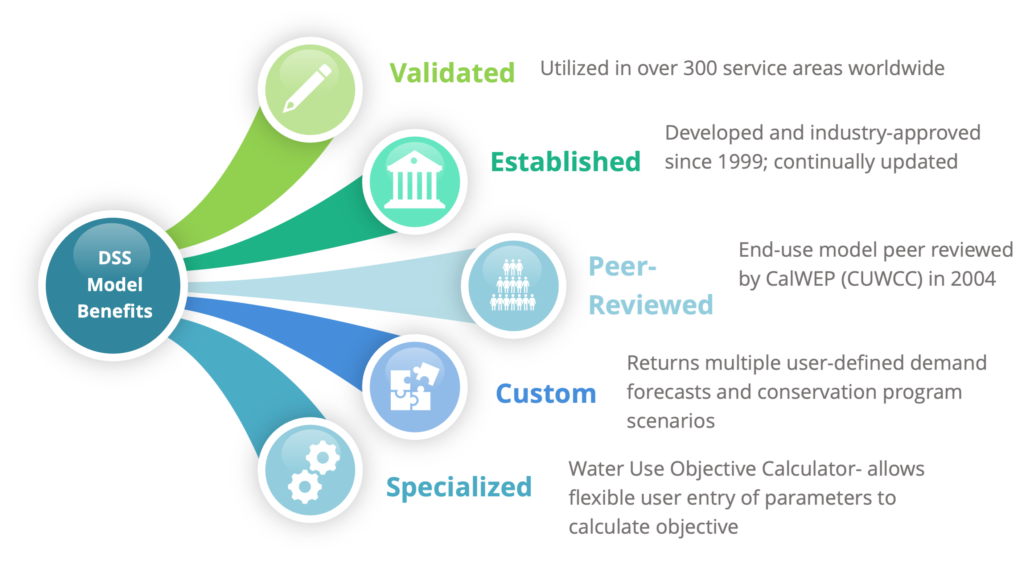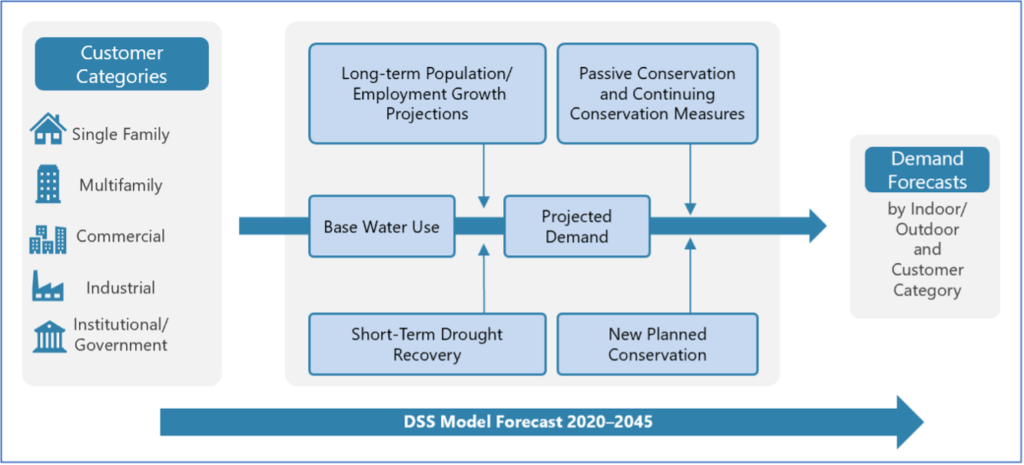Free for CalWEP Members!
CalWEP has peer reviewed and endorsed the following model since 2006. It is offered to all CalWEP members for use to estimate water demand, plumbing code, and conservation program savings.
Maddaus Water Management’s Least Cost Planning Decision Support System Model (DSS Model)
The DSS Model is used to prepare long-range, detailed demand projections. The purpose of the extra detail is to enable a more accurate assessment of the impact of water efficiency programs on demand and to provide a rigorous and defensible modeling approach necessary for projects subject to regulatory or environmental review.

Originally developed in 1999 and continuously updated, the DSS Model is an “end-use” model that breaks down total water production (water demand in the service area) to specific water end uses, such as plumbing fixtures and appliances. The model uses a bottom-up approach that allows for multiple criteria to be considered when estimating future demands, such as the effects of natural fixture replacement, plumbing codes, and conservation efforts. The DSS Model may also use a top-down approach with a utility-prepared water demand forecast.
To forecast urban water demands using the DSS Model, customer demand data is obtained from the water agency being modeled. Demand data is reconciled with available demographic data to characterize water usage for each customer category in terms of number of users per account and per capita water use. Data is further analyzed to approximate the split of indoor and outdoor water usage in each customer category. Published data on average per capita indoor water use and average per capita end use is combined with the number of water users to calibrate the volume of water allocated to specific end uses in each customer category. In other words, the DSS Model checks that social norms from end studies on water use behavior (e.g., flushes per person per day) are not exceeded or drop below reasonable use limits.
The DSS Model incorporates state and national plumbing codes and appliance standards to yield two demand forecasts, one with plumbing codes and one without plumbing codes. Plumbing code measures are independent of any water-use efficiency program and are based on customers following applicable current local, state, and federal laws, building codes, and ordinances.
The DSS Model also evaluates active conservation measures using benefit-cost analysis with the present value of the cost of water saved ($/Million Gallons or $/Acre-Feet). Benefits are based on savings in water and wastewater facility operations and maintenance (O&M) and any deferred capital expenditures. Forecasted water savings are based on implementing a selection of measures and can be adjusted to updated as programs change.

Contact Michelle Maddaus ([email protected]) or Lisa Maddaus ([email protected]) for more information and to request your free copy of the model.
